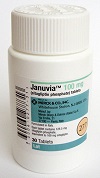
Backlash over pricing is reaching a head, with payers, the public and lawmakers pushing back at skyrocketing costs for drugs in the U.S. Big Pharma often defends its price-setting ways by pointing to rebates, saying that a drug's list price doesn't include discounts offered to insurers. But even taking those discounts into account, the U.S. still pays more than other countries for top-selling meds.
Bloomberg sifted through data from investment research firm SSR Health to compare discounted prices for 8 best-selling drugs with list prices for the meds in 14 high-income countries including the U.S., Canada, Japan, China and Germany. It found that the U.S. paid more after discounts for 7 out of the 8 drugs than other countries. The only exception was for Gilead's ($GILD) hep C blockbuster Sovaldi.
For example, Merck's ($MRK) diabetes pill Januvia costs $168 a month in the U.S. after a 49% discount. In Canada, the next most costly place to buy the med, Januvia runs at $68 a month. Sanofi's ($SNY) long-acting insulin injection Lantus is $186.38 a month in the U.S. after a 50% discount. The drug runs at about $139 a month in China, the second most expensive country to buy Lantus. Merck told Bloomberg that it does not disclose discounts for competitive reasons and Sanofi declined to comment to the news outlet.
Tried-and-true meds such as AstraZeneca's ($AZN) cholesterol fighter Crestor and AbbVie's ($ABBV) best-selling RA drug Humira also cost more in the U.S. after discounts. Crestor runs at $86.40 a month in the U.S. after a 60% discount. In the next most expensive country to get the med, Germany, the drug costs about $40. Humira is about $2,504 in the U.S. even after figuring in a 27% discount. In Germany, the second most costly place to buy the med, Humira costs $1,749.
"In the U.S., list prices are just a little bit crazy, and even with discounts that are tied to that it is still higher than Europe," IHS analyst Floriane Reinaud said, as quoted by Bloomberg. The prices differences in the U.S. and Europe could stem from varying approaches, as European regulators often drive tough bargains to get companies to bring down their prices.
AbbVie told Bloomberg that U.S. drug sales go through many channels with different levels of prices and rebates. And AstraZeneca said that each country has its own "pricing structure."

The only outlier was Gilead's hep C blockbuster Sovaldi. The med was only marginally more expensive in the U.S. than other countries, running at $17,700 after a 41% discount. In Saudi Arabia, the drug costs $18,315.
Gilead has been rolling out discounts on its hep C treatments Sovaldi and combo med Harvoni, pledging earlier this year to double its rebates on the drugs in 2015 to 46% from 22% in 2014. The company told Bloomberg that its pricing is based on countries' economic and health backgrounds and that negotiations with most governments are confidential.
Bloomberg couldn't estimate discounts for Novartis' ($NVS) leukemia med Gleevec, but still found that the U.S. list price for the drug is three times more than in other countries, running at $10,122 for a one month supply. The drug costs $3,003 in Germany.
Novartis is standing by its pricey med, saying that it offers rebates for Gleevec and that prices can vary between countries due to differences in income, regulations and the type of health system. But the company's U.S. price increases for Gleevec over the past 10 years have outrun "the modest discounts" the company has offered for the drug, David Whitrap, a spokesman for Express Scripts ($ESRX), told the news outlet.
- read the Bloomberg story
Special Report: The top 10 most expensive drugs of 2013